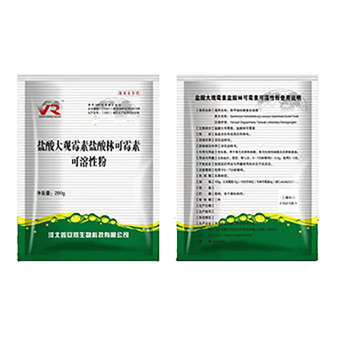- Afrikaans
- Albanian
- Amharic
- Arabic
- Armenian
- Azerbaijani
- Basque
- Belarusian
- Bengali
- Bosnian
- Bulgarian
- Catalan
- Cebuano
- Corsican
- Croatian
- Czech
- Danish
- Dutch
- English
- Esperanto
- Estonian
- Finnish
- French
- Frisian
- Galician
- Georgian
- German
- Greek
- Gujarati
- Haitian Creole
- hausa
- hawaiian
- Hebrew
- Hindi
- Miao
- Hungarian
- Icelandic
- igbo
- Indonesian
- irish
- Italian
- Japanese
- Javanese
- Kannada
- kazakh
- Khmer
- Rwandese
- Korean
- Kurdish
- Kyrgyz
- Lao
- Latin
- Latvian
- Lithuanian
- Luxembourgish
- Macedonian
- Malgashi
- Malay
- Malayalam
- Maltese
- Maori
- Marathi
- Mongolian
- Myanmar
- Nepali
- Norwegian
- Norwegian
- Occitan
- Pashto
- Persian
- Polish
- Portuguese
- Punjabi
- Romanian
- Russian
- Samoan
- Scottish Gaelic
- Serbian
- Sesotho
- Shona
- Sindhi
- Sinhala
- Slovak
- Slovenian
- Somali
- Spanish
- Sundanese
- Swahili
- Swedish
- Tagalog
- Tajik
- Tamil
- Tatar
- Telugu
- Thai
- Turkish
- Turkmen
- Ukrainian
- Urdu
- Uighur
- Uzbek
- Vietnamese
- Welsh
- Bantu
- Yiddish
- Yoruba
- Zulu
វិច្ឆិកា . 25, 2024 13:02 Back to list
Injection of Ivermectin for Treatment and Prevention in Piglets
Ivermectin Injection for Piglets A Comprehensive Overview
Ivermectin, a broad-spectrum antiparasitic agent, has gained popularity in veterinary medicine, particularly in the treatment of various parasitic infections in livestock. One of the primary beneficiaries of this treatment is piglets, as they are particularly susceptible to several parasitic infections that can impact their health and growth. This article delves into the use of ivermectin injection for piglets, highlighting its benefits, application, and considerations.
Ivermectin Injection for Piglets A Comprehensive Overview
Ivermectin works by binding to glutamate-gated chloride channels, causing paralysis and death of the parasites. It is effective against a wide range of parasites, making it a versatile option for treating and preventing infestations in piglets. The injectable form of ivermectin allows for direct administration, ensuring rapid absorption and efficacy. This is particularly advantageous in young animals, where oral administration may lead to difficulties or inconsistencies in dosing.
ivermectin injection for piglets

The recommended dosage of ivermectin for piglets is typically 0.2 mg per kg of body weight, administered via intramuscular injection. It is critical for farmers and veterinarians to adhere to the recommended dosage to ensure the safety and health of the animals. Overdosing can lead to toxicity, while under-dosing may not effectively eradicate the parasites, leading to recurrence and further health complications.
One of the significant benefits of using ivermectin in piglets is its long-lasting effects. A single injection can provide protection against many parasites for a prolonged period, reducing the need for frequent treatments and minimizing stress on the animals. Additionally, ivermectin is generally well-tolerated, exhibiting fewer side effects compared to some alternative treatments. It provides an effective means to improve the overall health and productivity of piglets, ultimately benefiting the farmer's bottom line.
However, it is crucial to approach the use of ivermectin with caution. The increasing reports of drug resistance highlight the need for responsible usage of antiparasitic medications. Rotation of different classes of anthelmintics and integrated control practices—such as good husbandry, biosecurity measures, and regular monitoring for signs of parasitic infections—are vital strategies that should accompany ivermectin use. Furthermore, farmers should be mindful of withdrawal times for pork intended for consumption, as residues from ivermectin can have implications for food safety.
In conclusion, ivermectin injection is a valuable tool in the management of parasitic infections in piglets. Its effectiveness, ease of use, and favorable safety profile make it a preferred choice among veterinarians and farmers alike. However, the conscientious application of this medication, combined with integrated management practices, is essential to ensure the sustainability of its effectiveness. As the livestock industry continues to evolve, ongoing research and education about best practices for parasite control will remain integral to enhancing the health and productivity of swine herds.
-
Guide to Oxytetracycline Injection
NewsMar.27,2025
-
Guide to Colistin Sulphate
NewsMar.27,2025
-
Gentamicin Sulfate: Uses, Price, And Key Information
NewsMar.27,2025
-
Enrofloxacin Injection: Uses, Price, And Supplier Information
NewsMar.27,2025
-
Dexamethasone Sodium Phosphate Injection: Uses, Price, And Key Information
NewsMar.27,2025
-
Albendazole Tablet: Uses, Dosage, Cost, And Key Information
NewsMar.27,2025













